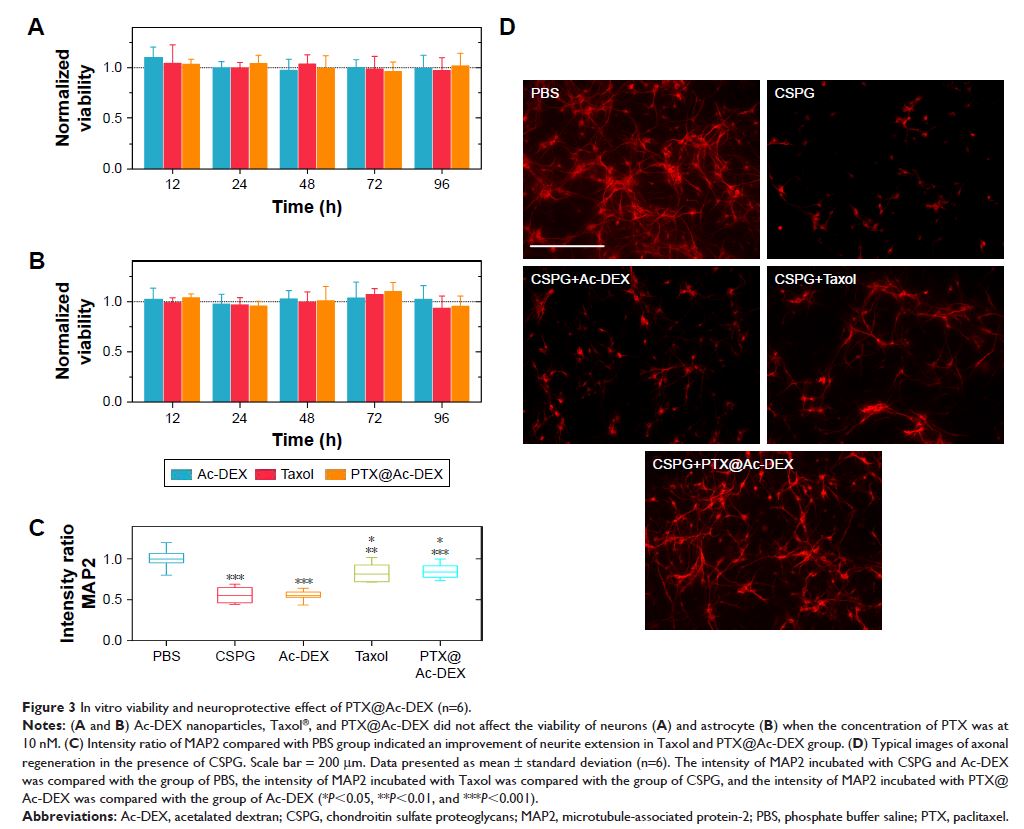9 1 2 3 6
论文已发表
注册即可获取德孚的最新动态
IF 收录期刊
- 2.6 Breast Cancer (Dove Med Press)
- 3.9 Clin Epidemiol
- 3.3 Cancer Manag Res
- 3.9 Infect Drug Resist
- 3.6 Clin Interv Aging
- 4.8 Drug Des Dev Ther
- 2.8 Int J Chronic Obstr
- 8.0 Int J Nanomed
- 2.3 Int J Women's Health
- 3.2 Neuropsych Dis Treat
- 4.0 OncoTargets Ther
- 2.2 Patient Prefer Adher
- 2.8 Ther Clin Risk Manag
- 2.7 J Pain Res
- 3.3 Diabet Metab Synd Ob
- 4.3 Psychol Res Behav Ma
- 3.4 Nat Sci Sleep
- 1.9 Pharmgenomics Pers Med
- 3.5 Risk Manag Healthc Policy
- 4.5 J Inflamm Res
- 2.3 Int J Gen Med
- 4.1 J Hepatocell Carcinoma
- 3.2 J Asthma Allergy
- 2.3 Clin Cosmet Investig Dermatol
- 3.3 J Multidiscip Healthc

基于葡聚糖的可生物降解纳米粒子:创伤性脊髓损伤治疗的一个备择而便捷的策略
Authors Liu W, Quan P, Li Q, Tang P, Chen J, Jiang T, Cai W
Received 22 April 2018
Accepted for publication 5 June 2018
Published 13 July 2018 Volume 2018:13 Pages 4121—4132
DOI https://doi.org/10.2147/IJN.S171925
Checked for plagiarism Yes
Review by Single-blind
Peer reviewers approved by Dr Cristina Weinberg
Peer reviewer comments 3
Editor who approved publication: Dr Linlin Sun
Introduction: After traumatic spinal cord injury (SCI), an inhibitory environment that
contains chondroitin sulfate proteoglycans (CSPGs) is formed that prevents
axonal regeneration and growth.
Materials and
methods: As previously reported, local administration
of Taxol® at a low
concentration has shown promising abilities to promote axonal regeneration and
downregulate inhibitory molecules after acute SCI. However, the application of
an invasive miniosmotic pump to deliver Taxol and the Cremophor-related
toxicity caused by Taxol limits the administration of Taxol.
Results: In this study, the sustained release of paclitaxel (PTX) for 7
days was achieved by incorporating PTX into acetalated dextran (Ac-DEX)
nanoparticles, and the prepared PTX-loaded Ac-DEX (PTX@Ac-DEX) nanoparticles
promoted neurite extension in the presence of CSPGs. In a rat SCI model, both
PTX@Ac-DEX and Taxol enhanced neural regeneration, inhibited CSPGs, protected
the injured spinal cord, and improved locomotor recovery. Because of the
sustained release of PTX, single administration of PTX@Ac-DEX showed equal
therapeutic effect with Taxol, which need to be administered for seven days
using a surgically implanted miniosmotic pump.
Conclusion: Overall, this study provides an effective and convenient strategy
for SCI therapy, which can improve neurite extension across an inhibitory
environment and avoid Cremophor-related toxicity caused by Taxol.
Keywords: acetalated dextran, nanoparticle, paclitaxel, spinal cord injury
